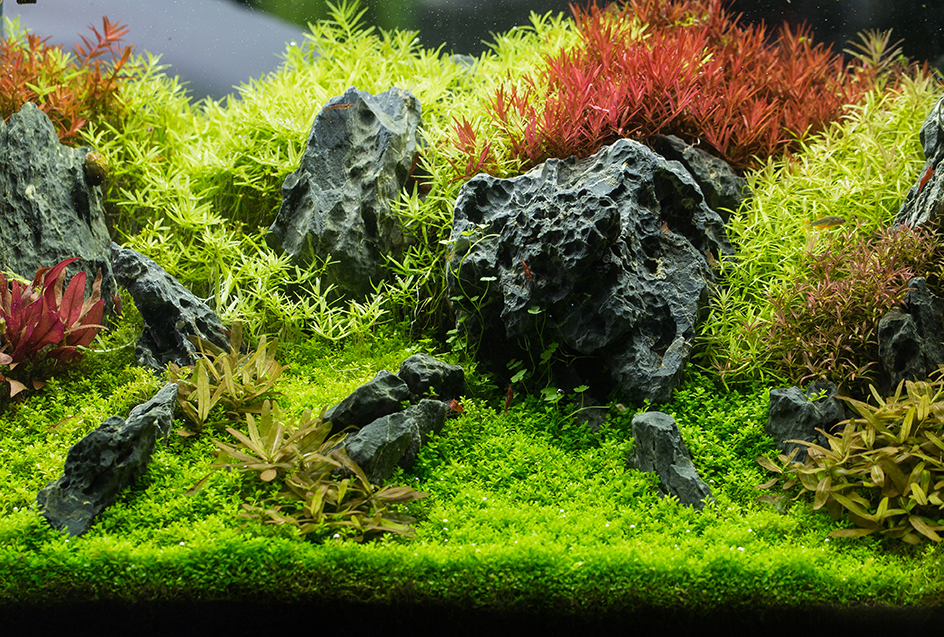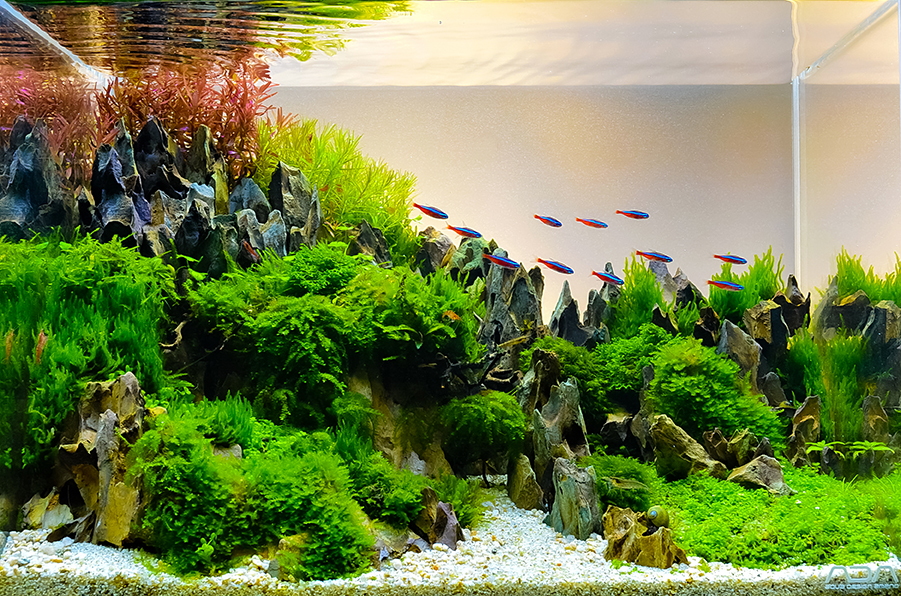What is aquascaping?
We are all aware of the visual appeal of classic aquariums filled with fish, but planted aquariums containing snails or shrimps can also be truly eye-catching – providing they are suitably designed. The design or replication of aesthetic landscapes under water is known as aquascaping. This is an increasingly popular trend in the world of fishkeeping, so much so that there are now plenty of fiercely contended aquascaping contests.
This special type of aquarium design can be traced back to Japanese nature photographer and aquarium designer Takashi Amano, who has decisively shaped the concept of aquascaping with his impressive natural aquariums. The difference between classic fishkeeping and aquascaping lies in the structured design or ‘layouts’ of the aquariums.
Nature as a source of inspiration
Aquascaping is all about creating visually appealing aquariums. The natural world above the water provides inspiration for the aquascaping layouts below it. Aquascapers often try to replicate certain images or scenes from nature, such as forests, mountain ranges or hills. These landscapes are primarily constructed using real plants, stones, roots and caves. As a result, aquascaping is often also referred to as underwater gardening. Aquascaping can involve several types of aquariums, from those containing plants alone to those stocked with snails or even small fish.

Creating an aquascape
Before aquascapers start setting up an aquarium, they first develop a precise design concept. Only then does the actual implementation begin. First, the appropriate or desired substrate must be added to the aquarium. A substrate slope can be used to create a sense of depth that visually enhances the aquarium. Attention can next be turned to the question of how to divide up the aquarium. This is usually based on the principle of the ‘golden ratio’, a division ratio that determines how the aquarium can best be divided up to achieve a visually harmonious structure. A classic choice is for the sky to make up a third of the overall picture.
In addition to the way the aquarium is divided up, the hardscapes are also of key importance. These are the hard landscape materials, such as the right stones and roots. Ideally, only one type of rock and one type of wood should be used. A further aquascaping rule is that using an odd number of stones creates greater visual appeal. If adding roots, it is essential to ensure that they are saturated beforehand as they can otherwise become buoyant when the aquarium is filled with water.
Once the hardscapes have been added, it is time for the softscapes, meaning the various plants. A broad range of plants from stem plants to mosses and ferns can be used to create the desired landscape or artwork. There are also designs that incorporate a maximum of three – or even only one – plant species. Softscapes or plants are also used to conceal the technology needed for the aquarium to thrive so as not to detract from the design. On the whole, aquascaping should create a harmonious yet dynamic picture.
Aquascaping versus classic fishkeeping
In classic aquarium set-ups, little attention is paid to the hardscape elements. Aquatic plants are largely used to positively impact the water quality and provide the fish with safe havens in which they can hide. With aquascaping, precisely the opposite is true. Here, the main focus is on the stones and roots, which should draw the eye. This shows the sheer versatility of the world of fishkeeping, which allows people to give their creativity free rein when designing aquariums.

